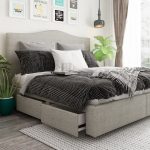1 in 4 Australians suffer from Obstructive Sleep Apnea (OSA) and a staggering 80% of people with Sleep Apnea remain undiagnosed. These are big numbers and a sign of the significant impact Sleep Apnea has on a range of people all around the world.
What is Sleep Apnea?
First of all let’s clarify the fact that you may see two types of spelling when it comes to Sleep Apnea. The other common way is Sleep Apnoea, in Australia they are both commonly used and for this article we will go with Sleep Apnea. Obstructive Sleep Apnea or OSA, the most common type, involves repeated episodes of airway obstruction during sleep, due to the relaxation of the tongue and airway-muscles. They relax in such a way that they collapse and block the airway during sleep. This interruption of air supply to the lungs is called an Apnea and it reduces the supply of oxygen to vital organs. An Apnea can last up to a minute or more and may occur hundreds of times per night.
Symptoms
- OSA is commonly associated with snoring
- Waking up unrefreshed
- Daytime tiredness
- Waking during the night choking or gasping for air
Why it is so dangerous
Many people simply don’t know they have it, or underestimate its severity. Sleep Apnea means that you do not get the normal amounts of light and deep sleep your body needs to function correctly and maintain good health. As a result, Sleep Apnea can affect your life in a variety of ways, in every aspect from health and happiness to career, relationships and success. OSA is an independent risk factor for the development of hypertension and insulin resistance, and is associated with heart attack and stroke. Patients with OSA have about a 7-fold higher risk of death and heart disease.
Risk factors
- Age (the older you get, the more likely you are to have Sleep Apnea)
- A large neck circumference (greater than 43cm in men and 40cm in women)
- Narrow upper airway (due to comparatively large tongue or uvula)
- Being Overweight / Obese
- Recessed chin
- Family history
- Large tonsils or adenoids
- Consumption of alcohol or Sleeping Pills that could relax your throat
Diagnosis
OSA is diagnosed by having a full, overnight diagnostic sleep study.
Treatments
OSA treatment depends on the individual and the severity of the condition.
CPAP – Continuous Positive Airway Pressure
A compact air pump delivers a flow of pressurized air from a mask direct to your airway. This pressurised air acts as a pneumatic splint and prevents the airway from collapsing, which causes snoring to stop.
Mandibular Advancement Splint (MAS)
A small device which is placed in the mouth during sleep, causing the lower jaw and tongue to be held more forward than usual. This minimises vibration of the tissues at the back of the pharynx, reducing the volume of snoring.
Lifestyle Changes
Taking control of your weight is critical to effectively treat OSA. Implementing an exercise routine and a change to a healthier diet will help ease OSA. Change sleeping positions and manage your seasonal allergies will also help.
(Image Courtesy of www.cbsnews.com)





